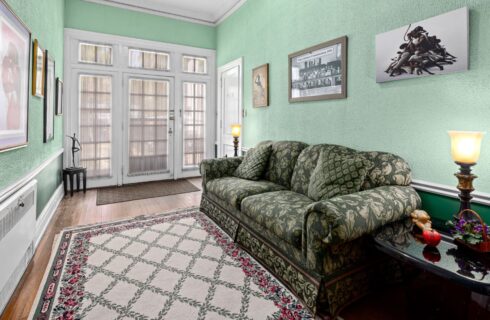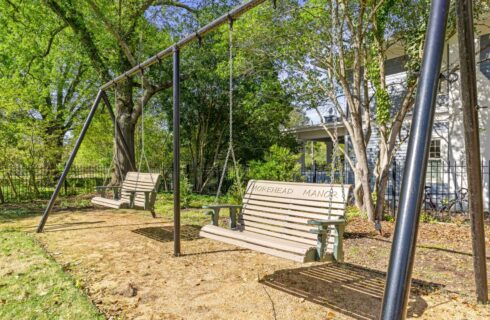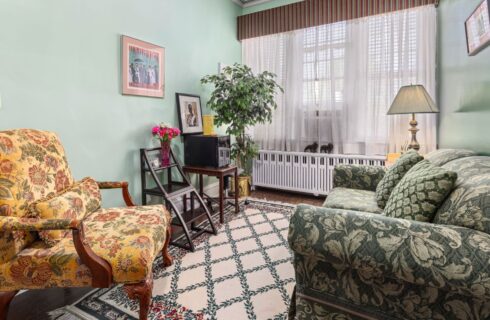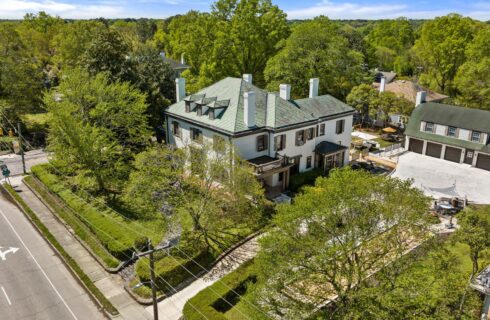
Each year Preservation Durham presents their annual tour. 2016 is the year of the bungalow. The bungalow is the first truly American house form not derived from European antecedents. Bungalows dominated residential construction across the country from the time of the First World War right up to the Great Depression.
Many thousands of bungalows were built in Durham during this period and thousands of them survive today – a testament to the durability and popularity of the form. Bungalows make up a large part of Durham’s inventory of historic structures and they define the majority of our historic neighborhoods.
This year’s tour, this April 24 and April 25, will showcase eight to ten houses in diverse bungalow styles in neighborhoods across the city. Their purpose is to promote a deeper public appreciation of bungalow houses, the people who lived in them, and of Durham at the time they were built.
In the months from April through November, weather permitting, Preservation Durham offers free walking tours that introduce downtown Durham’s history and architecture. The ninety-minute tours depart at Durham Farmers’ Market at 501 Foster Street at 10 am on the second, third, and fourth Saturdays of each month. Each of the three weekly tours focuses on a different aspect of Durham’s unique history.
On second Saturdays, the focus is Durham’s Tobacco History. Preservation Durham’s enthusiastic and well-informed volunteer tour guides will lead you through the history of
the tobacco industry as they tell many tales from Durham’s past, using oral histories and photographs to illustrate the history of tobacco and the people who supplied tobacco products known throughout the world.
The historic tour includes descriptions of life in the factories and at home for the thousands of workers who made the Bull City one of the biggest industrial cities in the South as well as those who, like guitarist John Dee Holeman, trekked to Durham’s tobacco auctions to play the blues.
the struggle for equality as well as local leaders like Floyd McKissick and
national figures like Dr. Martin Luther King, Jr. who brought America’s
attention to the campaign for civil rights in the Bull City.
how it has transformed itself from an industrial center to the City of
Medicine. Docents describe the history of many of the landmark buildings that
make up the Downtown Historic District, listed on the National Register of
Historic Places since 1977. Featured on the tour are the 1915 First National
Bank, the 1921 Mechanics and Farmers Bank Building, and Preservation Durham’s
one-time home, the Snow Building, built in 1933.
Edward F. Sibbert, and Shreve, Lamb, and Harmon as well as by local companies
Rose and Rose, George Watts Carr, Hill C. Linthicum, and Atwood and Weeks.
State Historic Site. Today it includes restored historic structures,
special living history events, including a commemoration on the
anniversary, and tours – all available without any admission fees.
– See more at: http://www.durham-nc.com/listings/Bennett-Place-State-Historic-Site/1554/#sthash.MRKWDlc4.dpuf
Place is the site of the largest troop surrender and the effective end
of the Civil War. It was in April 1865 that Confederate general Joseph
E. Johnston and his Union adversary, General William T. Sherman decided
to meet in Durham at Bennett Place, where Gen. Johnston surrendered the
Southern armies in the Carolinas, Florida, and Georgia.
That historic event can be explored at this official North Carolina
State Historic Site. Today it includes restored historic structures,
special living history events, including a commemoration on the
Each year, Preservation Durham presents an annual Old Durham Home Tour that offers the public a glimpse into a different historic neighborhood or thematic group of historic properties. For
Preservation Durham, 2016 is the year of the bungalow. The bungalow is
the first truly American house form not derived from European
antecedents. Bungalows dominated residential construction across the
country from the time of the First World War right up to the Great
Depression.
Many thousands of bungalows were built in Durham during this
period and thousands of them survive today – a testament to the durability and
popularity of the form. Bungalows make up a large part of Durham’s
inventory of historic structures and they define the majority of our historic neighborhoods.
This year’s tour will showcase eight to ten houses in diverse bungalow
styles in neighborhoods across the city. Our purpose is to promote a fuller
public appreciation of bungalow houses, the people who lived in them, and of
Durham at the time they were built.

Durham’s history and architecture on the second, third, and fourth
Saturdays of April through November, weather cooperating. The
ninety-minute tours depart at 10 am from the Durham Farmers’ Market at
501 Foster Street. Each month, the three weekly tours all focus on
different aspects of Durham.
and well-informed volunteer tour guides will lead you through the history of
the tobacco industry as they tell many tales from Durham’s past, using oral
histories and photographs to illustrate the history of tobacco and the people
who supplied tobacco products known throughout the world.
descriptions of life in the factories and at home for the thousands of workers
who made the Bull City one of the biggest industrial cities in the South as
well as those who, like guitarist John Dee Holeman, trekked to Durham’s tobacco
auctions to play the blues.
Durham that were important during the 1950s and 60s Civil Rights movement,
including the Durham County Courthouse, the Arts Center (originally Durham High
School and later City Hall), and the Kress and Woolworth buildings, sites of
sit-in protests.
the struggle for equality as well as local leaders like Floyd McKissick and
national figures like Dr. Martin Luther King, Jr. who brought America’s
attention to the campaign for civil rights in the Bull City.
how it has transformed itself from an industrial center to the City of
Medicine. Docents describe the history of many of the landmark buildings that
make up the Downtown Historic District, listed on the National Register of
Historic Places since 1977.
Bank, the 1921 Mechanics and Farmers Bank Building, and Preservation Durham’s
one-time home, the Snow Building, built in 1933. Built by the successful
entrepreneurs of early 20th Durham, buildings Downtown were designed by
nationally known architects like Milburn and Heister, Bertrand E. Taylor,
Edward F. Sibbert, and Shreve, Lamb, and Harmon as well as by local companies
Rose and Rose, George Watts Carr, Hill C. Linthicum, and Atwood and Weeks.
There are fine examples of many architectural styles popular in the 20th
century, including Art Deco, Italianate, and Neo-Classical, and post World War
II Modern. Many of downtown’s older building have recently changed their functions,
turning from tobacco factories and textile mills into hip urban lofts, stores,
and offices.
Morehead Manor Bed and Breakfast in Durham, North Carolina invites you to stay in our luxurious accommodations. We (Daniel and Monica) welcome you to explore the Bull City.
Place is the site of the largest troop surrender and the effective end
of the Civil War. It was in April 1865 that Confederate general Joseph
E. Johnston and his Union adversary, General William T. Sherman decided
to meet in Durham at Bennett Place, where Gen. Johnston surrendered the
Southern armies in the Carolinas, Florida, and Georgia.
That historic event can be explored at this official North Carolina
State Historic Site. Today it includes restored historic structures,
special living history events, including a commemoration on the
anniversary, and tours – all available without any admission fees.
– See more at: http://www.durham-nc.com/listings/Bennett-Place-State-Historic-Site/1554/#sthash.MRKWDlc4.dpuf
life as a Civil War soldier by walking through a living history
encampment with re-enactors from both sides of the war. Talk with
soldiers about their roles and living conditions, watch military drills,
see cooking demonstrations, and more. The Bennett Place State Historic Site
is where Generals Johnston and Sherman negotiated the largest troop
surrender of the war, and now houses reconstructed buildings and a
museum to preserve its history.
– See more at:
http://www.durham-nc.com/events/major-annual-events/#sthash.Ht0vt0jp.dpuf








